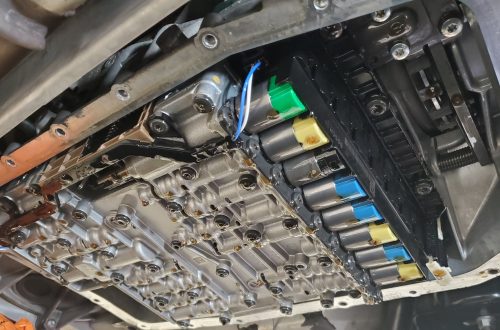Particularly in commercial vehicles, piston rings are essential parts of internal combustion engines. In addition to closing the combustion chamber and regulating oil consumption, they also help transport heat from the piston to the cylinder wall. Engine efficiency and performance are largely dependent on properly operating piston rings. There may be serious consequences if these rings are worn out or break, especially in terms of vehicle emissions and environmental compliance.
Recognizing the Connection between Emissions and Piston Rings
Increased engine blow-by, or the phenomenon where exhaust gases escape from the combustion chamber into the crankcase, can be caused by damaged piston rings. This leakage results in more contaminants and unburned fuel being released into the atmosphere, in addition to decreasing combustion efficiency. Particulate matter, nitrogen oxides, and hydrocarbons in the exhaust can significantly increase a car’s emissions and cause problems with environmental compliance. Whether you’re looking for Auto Repair in Aurora, Co, or elsewhere, this issue can provide significant difficulties for commercial vehicles, which frequently have to adhere to stringent emissions regulations.
Repercussions of Higher Emissions
Increased emissions brought on by damaged piston rings may have a number of unfavourable effects. First of all, these emissions add to air pollution, which has a negative effect on the environment and public health. The wider repercussions are significant, ranging from detrimental effects on ecosystems to respiratory problems in the population. Commercial vehicle operators and fleets may suffer financial losses if their vehicles are not allowed to operate in a given jurisdiction, subject to harsh fines, higher taxes, or both.
How to Spot Damaged Piston Ring Symptoms
It’s critical to identify damaged piston ring symptoms in order to stop future degradation and related emissions problems. Significant oil consumption, noticeable exhaust smoke, and a decrease of engine power or efficiency are possible symptoms. Regular testing and inspections by fleet management can help spot these problems early. The health of piston rings and other important parts can be learned a lot by using diagnostic instruments to assess engine performance and emissions.
Strategies and Solutions for Mitigation
Fleet managers need to put timely repairs and routine maintenance first in order to reduce the negative effects of damaged piston rings on emissions. Piston ring longevity can be increased by prioritizing preventive maintenance and utilizing premium engine oils. Investing in contemporary diagnostic technology also minimizes downtime and potential emissions spikes by enabling early issue diagnosis. It is imperative to promptly replace compromised piston rings in order to reinstate engine efficiency and guarantee adherence to emissions requirements.
Conclusion
Broken piston rings affect commercial vehicle emissions, which harms the environment and the law. As organizations face stricter pollution rules, understanding piston rings is crucial. Modern diagnostics and preventative maintenance can help commercial vehicle operators enhance engine performance, cut emissions, and satisfy environmental standards. In the end, fixing piston ring issues improves compliance and the environment.






